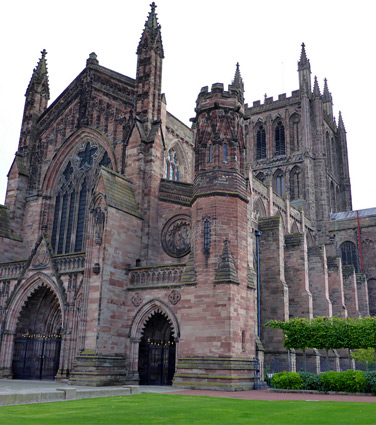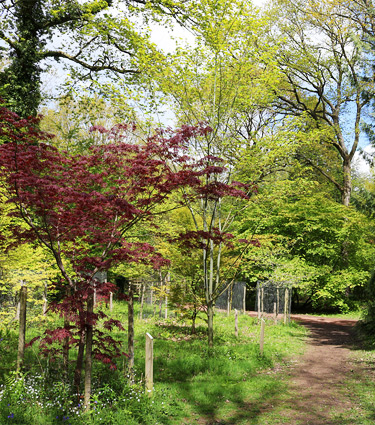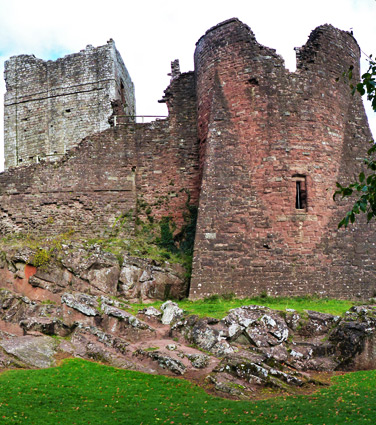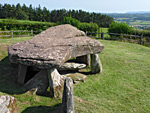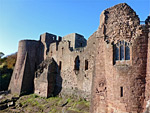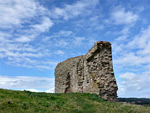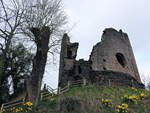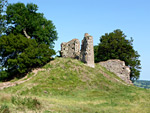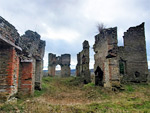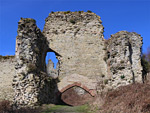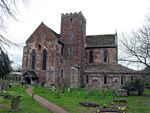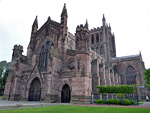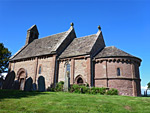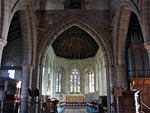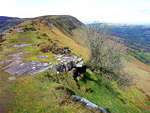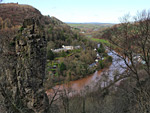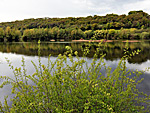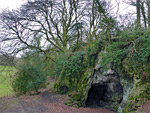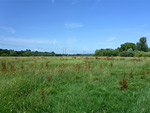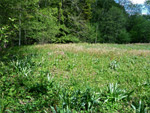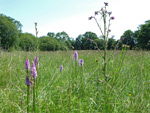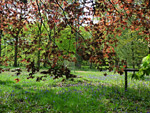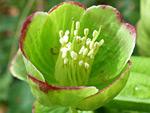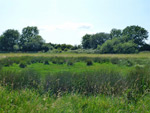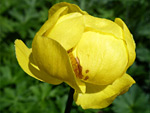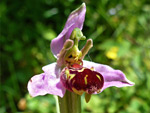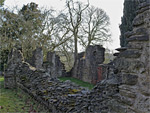Herefordshire contains a mix of fields, woods, rivers, valleys and small hills, typical of much of southern England, and includes half of two Areas of Outstanding Natural Beauty - the northern section of the Wye Valley (shared with Gloucestershire) and the western half of the Malvern Hills (shared with Worcestershire). Also within the county are a small component of the Black Mountains, which extend into neighboring Powys, where they form part of Brecon Beacons National Park. Herefordshire has no especially wild and rugged landscapes, but plenty of relatively easy trails, the best of which are in the two designated areas. Major towns and cities include Hereford, Leominster, Ross-on-Wye and Ledbury.
There are no ruined abbeys in Herefordshire, no Roman remains, and only one significant prehistoric site (Arthur's Stone, a burial chamber), but the county does have a grand cathedral, a selection of old churches, and several interesting castles, in varying states of completeness.
There are no ruined abbeys in Herefordshire, no Roman remains, and only one significant prehistoric site (Arthur's Stone, a burial chamber), but the county does have a grand cathedral, a selection of old churches, and several interesting castles, in varying states of completeness.
Ancient SitesArthur's Stone Stone-lined burial chamber from the Neolithic period, on a flat-topped ridge between the River Wye and River Dore Rating: ★★★★★ |
CastlesClifford Castle - fragmentary, overgrown ruins of a 12th century castle, on a hill above the River Wye; in private ownership |
| Goodrich Castle Secluded, well preserved Norman castle with a rural location overlooking the River Wye, built on a block of reddish sandstone Rating: ★★★★★ |
Hampton Court Castle - castellated mansion built in the 15th century, surrounded by extensive gardens; complete, fully furnished, and open to the public between April and October |
| Kilpeck Castle Minor but picturesque Norman ruin on a large motte ringed by a grassy moat, with grand views of the Welsh Marches Rating: ★★★★★ |
Kinnersley Castle - late 16th century castle incorporating traces of an earlier fortification; open to the public on just a few days each year |
| Longtown Castle Circular keep above substantial bailey walls, on a hill near the River Monnow, facing the east side of the Black Mountains Rating: ★★★★★ |
| Snodhill Castle Fragmentary ruins of an early Norman stone castle, recently cleared of undergrowth and stablised Rating: ★★★★★ |
| Stapleton Castle Remains of a 17th century manor house, on a high motte, site of a 12th century castle Rating: ★★★★★ |
| Wigmore Castle Overgrown but extensive and atmospheric ruins of a 13th century castle, on several levels Rating: ★★★★★ |
| Wilton Castle - partly restored ruins of a 12th century castle and a Tudor manor house |
Cathedrals, and other major churchesDore Abbey Parish church with medieval, cathedral-like architecture. Founded in 1147 as a Cistercian monastery, and occupying just part of the original structure; ruins of other sections adjoin the current church Rating: ★★★★★ |
| Hereford Cathedral Large and beautiful building dating from the late 11th century, constructed mostly in the decorated Gothic style Rating: ★★★★★ |
| Kilpeck Church Small Norman church in a quiet village, containing an unusually fine and varied collection of stone carvings Rating: ★★★★★ |
| Madley Church Unusually large parish church from the 13th century, containing medieval stained glass, ancient wall paintings and a vaulted crypt Rating: ★★★★★ |
LandscapesBlack Hill and Olchon Valley Easternmost summit of the Black Mountains, tapering to a narrow, rock-lined ridge, overlooking a secluded valley Rating: ★★★★★ |
| Symonds Yat Steep, wooded, rocky slopes above the River Wye, crossed by various paths, one to the viewpoint of Symonds Yat Rock Rating: ★★★★★ |
Nature ReservesBodenham Lake Shallow, tree-lined lake alongside the River Lugg, formed by flooding of gravel pits in the 1980s; a bird sanctuary Rating: ★★★★★ |
| King Arthur's Cave Narrow strip of ancient woodland at the foot of limestone cliffs which contain several short caves Rating: ★★★★★ |
| Lugg Meadow Communal pasture (lammas meadows) beside the River Lugg, flooded in winter, and supporting several rare plant species Rating: ★★★★★ |
| Pentaloe Glen and Convallaria Area Moist woodland beside a stream, and a patch of spring-fed fen vegetation; part of the Haugh Woods Rating: ★★★★★ |
| Quebb Corner Meadow Small, tree-lined field of neutral grassland, with a marshy area at one corner Rating: ★★★★★ |
| Queenswood Country Park & Arboretum Semi-natural oak woodland, surrounding an arboretum containing over 1,200 specimen trees from all over the world Rating: ★★★★★ |
| Rudge End Quarry Long-abandoned quarry, on the south side of a limestone hill; several rare plant species Rating: ★★★★★ |
| The Sturts Three groups of fields within the floodplain of the River Wye, separated by streams and ditches Rating: ★★★★★ |
| Upper Welson Marsh Small, hidden area of marsh and fen, ringed by trees, at the foot of a ridge near the Wye Valley Rating: ★★★★★ |
| White Rocks Twelve acres of ancient woodland, scrub, and wet and dry grassland, above the valley of the River Wye Rating: ★★★★★ |
Ruined ChurchesEdvin Loach Old Church Minor but interesting ruins of an 11th century church, on the site of a small Norman castle; adjoins a replacement, Victorian church Rating: ★★★★★ |
